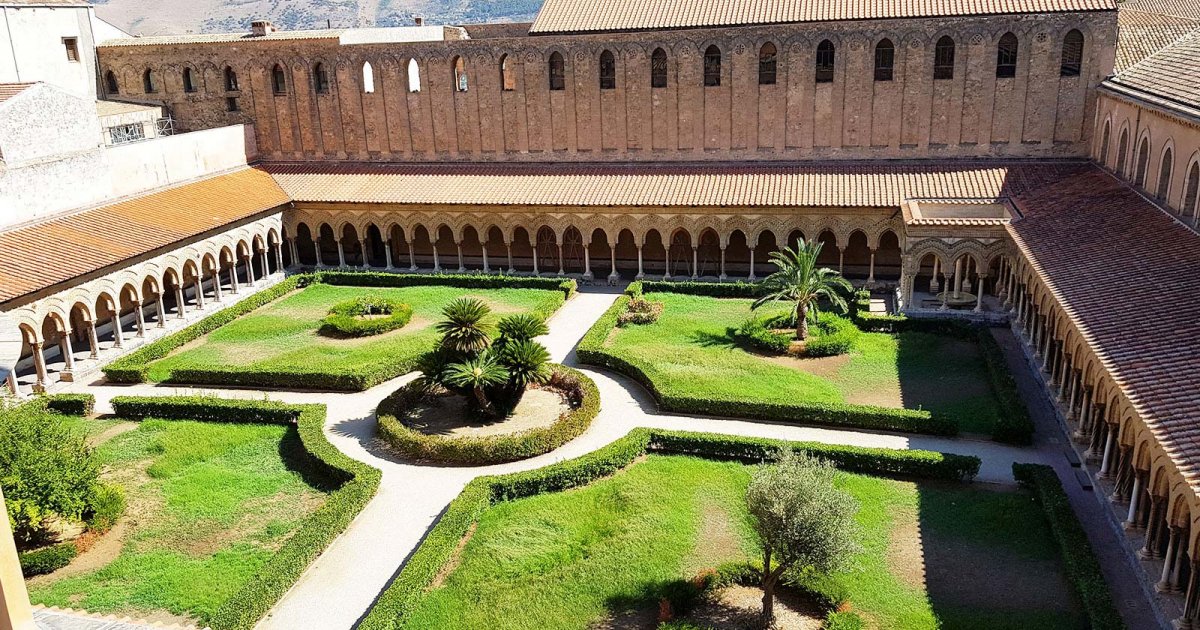MONREALE CATHEDRAL, Cloister
 Language: English / USA
Language: English / USA
The famous Cloister is the main part remaining of the large Benedictine monastery built at the end of the 12th century, at the same time as the church, on the sunniest side of the edifice. The square structure measures 47 meters on each side, and is composed of 228 slender double columns supporting 26 pointed arches on each side. The double arches are decorated with lava stone and limestone inlays which create a two-color pattern. Above them runs a horizontal strip featuring the same pattern, with elegant variations.
The elegance of the columns is further embellished by the variety of shapes and decorations: plain, vine leaf, zigzag, mosaic inlay, gold and glass paste inserts, each with a different design. A number of the capitals were clearly crafted in haste and by unskilled workers, perhaps so the work could be completed in a hurry, but others are marvelous works: some light and elegant, others thicker and richly sculpted, they are the finest examples of Romanesque sculpture on the island.
The subjects are based on ancient models, often combining fantastic creatures, or episodes from the Bible, as well as everyday life: hunting scenes, jugglers, farm work and festivals. A genuine passion for depicting the natural world is evident everywhere, with real plants and animals featured alongside bizarre inventions, mixed with sacred or legendary images in an unpredictable sequence of scenes with no apparent plan and combining different, often clashing styles of craftsmen and artists of different cultures and capacities.
In one corner of the courtyard, below a small square cloister, you’ll find a magnificent fountain, made up of a round basin, supported by a cylindrical base, rising up from which is a stem in the form of a stylized palm embellished with horizontal zigzag decorations. The bud at the top is decorated with six dancing figures alternating with six musicians. Immediately above, water spouts from twelve leonine and human faces topped with large leaves.
An interesting fact: the fountain was originally built not for decorative purposes, but was where the friars washed.
Our visit to Monreale Cathedral ends here. MyWoWo would like to thank you - see you again at another Wonder of the World!



